Abstract
Detection in the rhizosphere of the siderophore produced by an inoculated microorganism is critical to determining the role of microbial iron chelators on plant growth promotion. We previously reported the development of monoclonal antibodies (MAb) to ferric pseudobactin, the siderophore of plant-growth-promoting Pseudomonas strain B10. One of these MAb reacted less strongly to pseudobactin than to ferric pseudobactin. The MAb reacted to Al(III), Cr(III), Cu(II), and Mn(II) complexes of pseudobactin at a level similar to the level at which it reacted to ferric pseudobactin and reacted less to the Zn(II) complex, but these metals would make up only a small fraction of chelated pseudobactin in soil on the basis of relative abundance of metals and relative binding constants. Fourteen-day-old barley plants grown in limed and autoclaved soil were inoculated with 109 CFU of Pseudomonas strain Sm1-3, a strain of Pseudomonas B10 Rifr Nalr selected for enhanced colonization, and sampled 3 days later. Extraction and analysis of the roots and surrounding soil using the MAb in an immunoassay indicated a concentration of 3.5 × 10-10 mol of ferric pseudobacting g-1 (wet weight). This is the first direct measurement of a pseudobactin siderophore in soil or rhizosphere samples.
Full text
PDF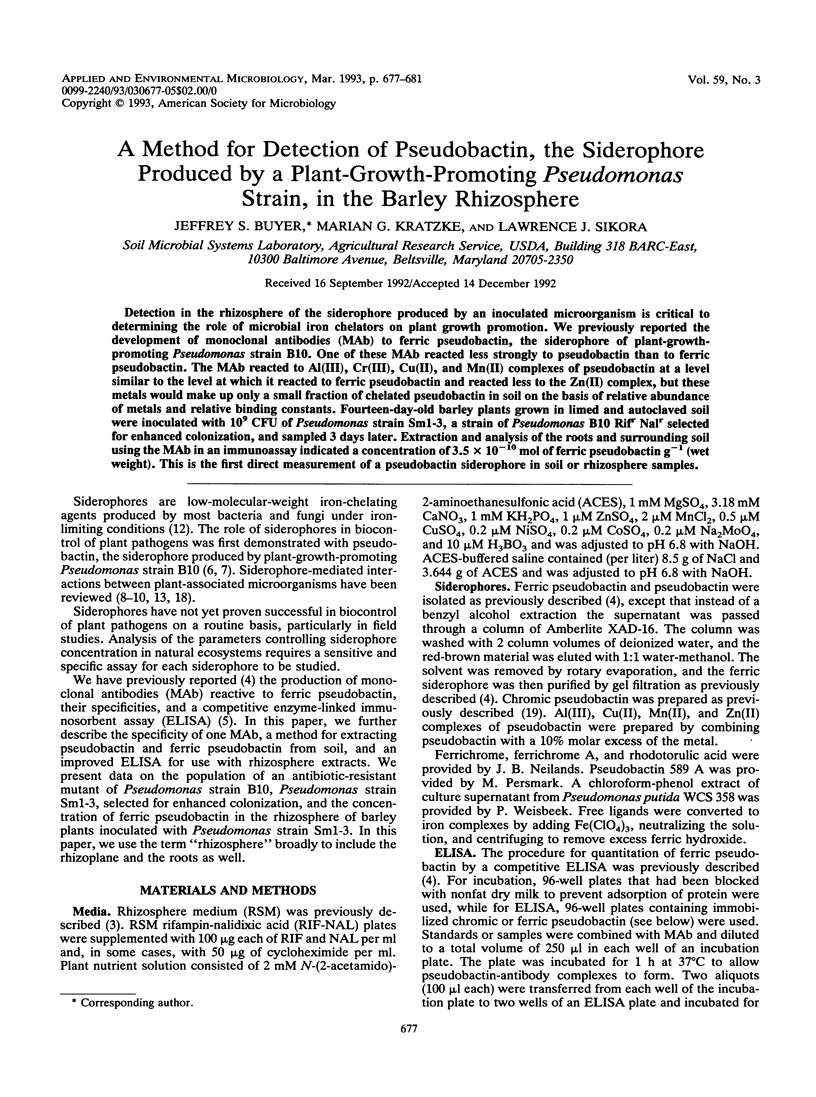
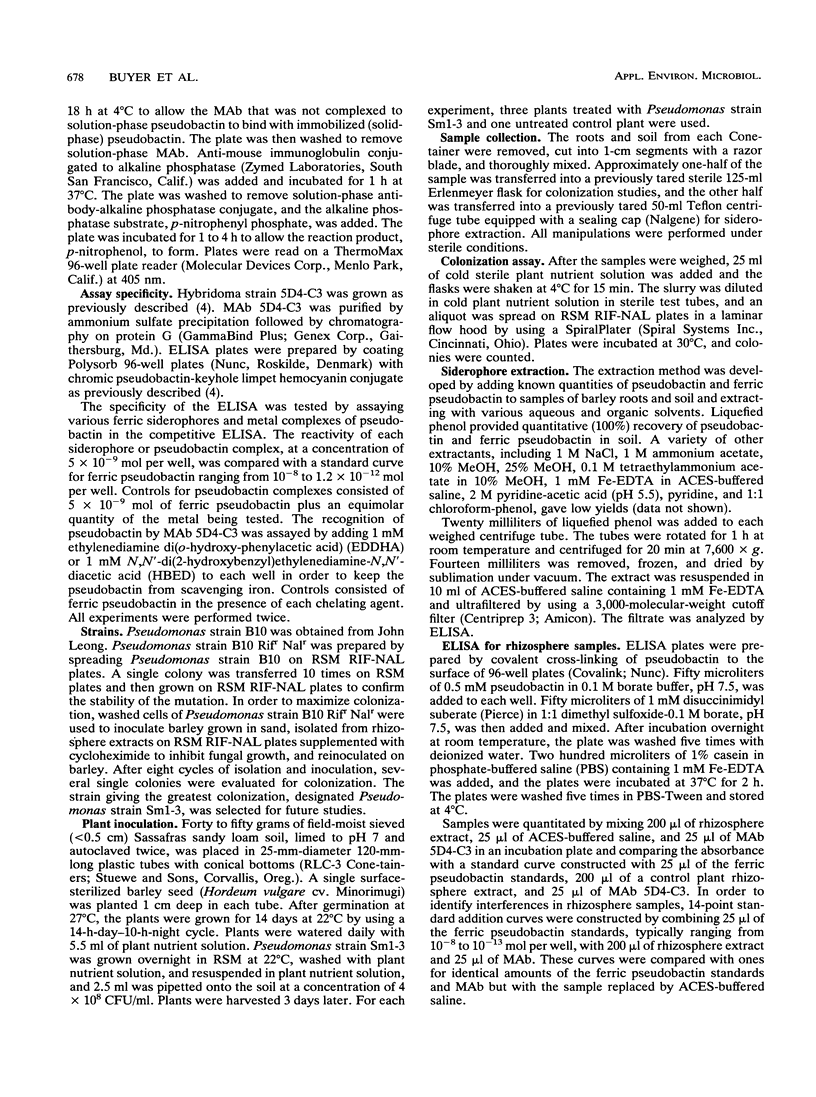
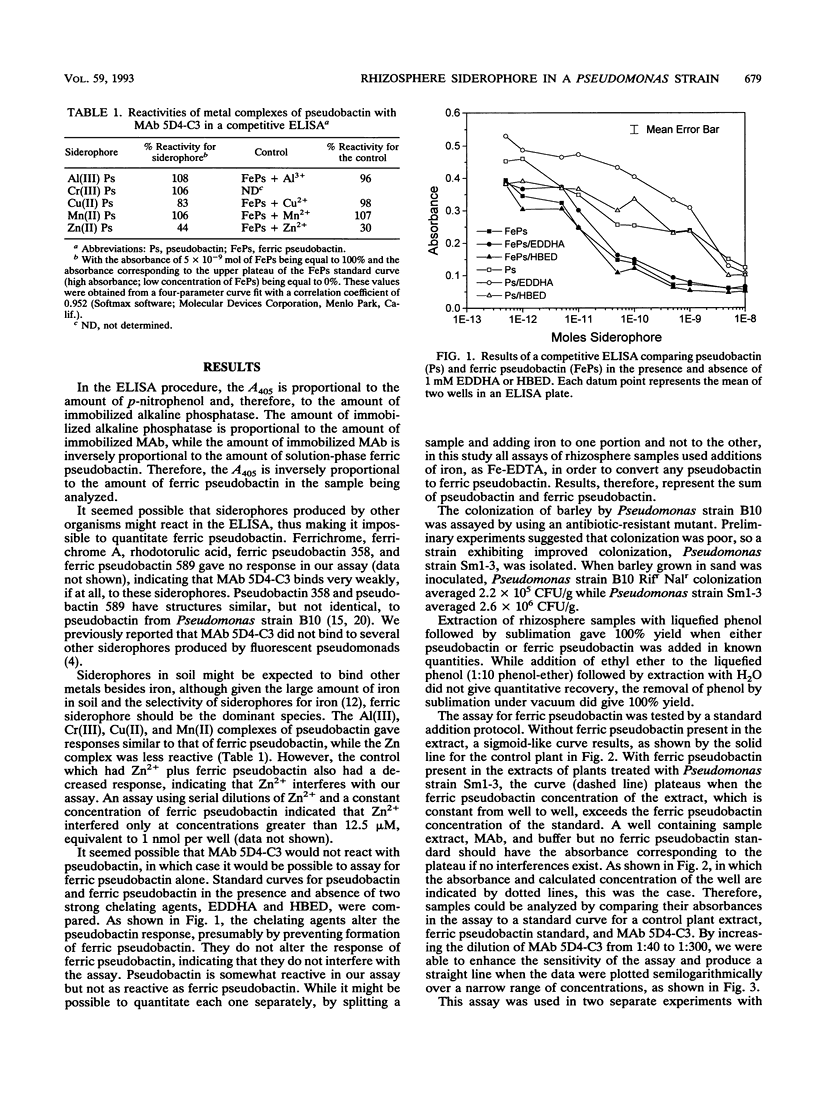
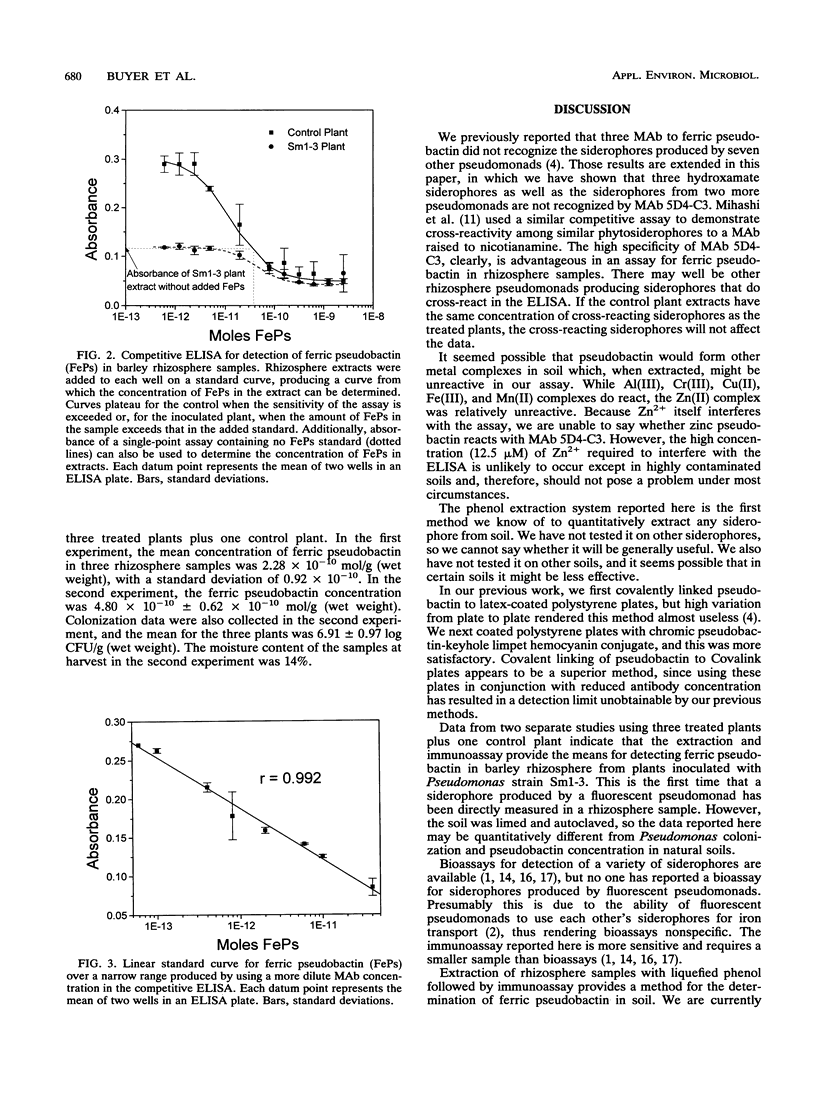
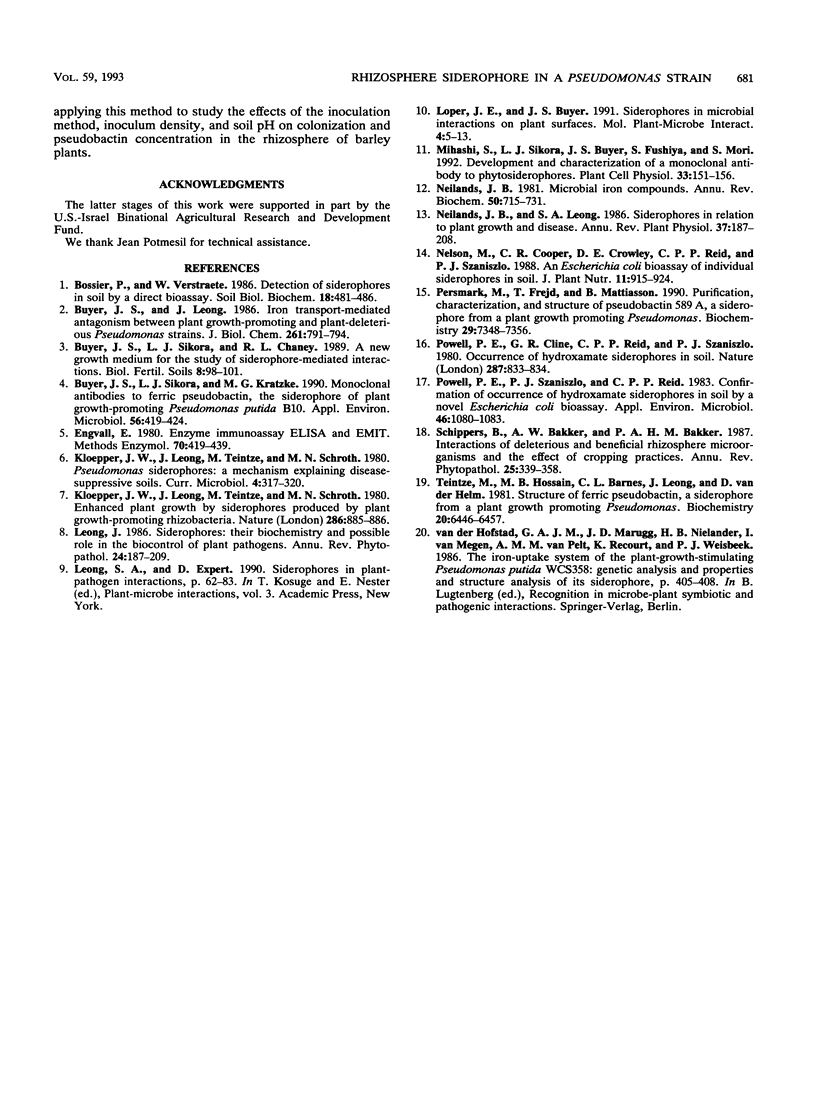
Selected References
These references are in PubMed. This may not be the complete list of references from this article.
- Buyer J. S., Leong J. Iron transport-mediated antagonism between plant growth-promoting and plant-deleterious Pseudomonas strains. J Biol Chem. 1986 Jan 15;261(2):791–794. [PubMed] [Google Scholar]
- Buyer J. S., Sikora L. J., Kratzke M. G. Monoclonal Antibodies to Ferric Pseudobactin, the Siderophore of Plant Growth-Promoting Pseudomonas putida B10. Appl Environ Microbiol. 1990 Feb;56(2):419–424. doi: 10.1128/aem.56.2.419-424.1990. [DOI] [PMC free article] [PubMed] [Google Scholar]
- Engvall E. Enzyme immunoassay ELISA and EMIT. Methods Enzymol. 1980;70(A):419–439. doi: 10.1016/s0076-6879(80)70067-8. [DOI] [PubMed] [Google Scholar]
- Neilands J. B. Microbial iron compounds. Annu Rev Biochem. 1981;50:715–731. doi: 10.1146/annurev.bi.50.070181.003435. [DOI] [PubMed] [Google Scholar]
- Persmark M., Frejd T., Mattiasson B. Purification, characterization, and structure of pseudobactin 589 A, a siderophore from a plant growth promoting Pseudomonas. Biochemistry. 1990 Aug 7;29(31):7348–7356. doi: 10.1021/bi00483a026. [DOI] [PubMed] [Google Scholar]
- Powell P. E., Szaniszlo P. J., Reid C. P. Confirmation of Occurrence of Hydroxamate Siderophores in Soil by a Novel Escherichia coli Bioassay. Appl Environ Microbiol. 1983 Nov;46(5):1080–1083. doi: 10.1128/aem.46.5.1080-1083.1983. [DOI] [PMC free article] [PubMed] [Google Scholar]
- Teintze M., Hossain M. B., Barnes C. L., Leong J., van der Helm D. Structure of ferric pseudobactin, a siderophore from a plant growth promoting Pseudomonas. Biochemistry. 1981 Oct 27;20(22):6446–6457. doi: 10.1021/bi00525a025. [DOI] [PubMed] [Google Scholar]


